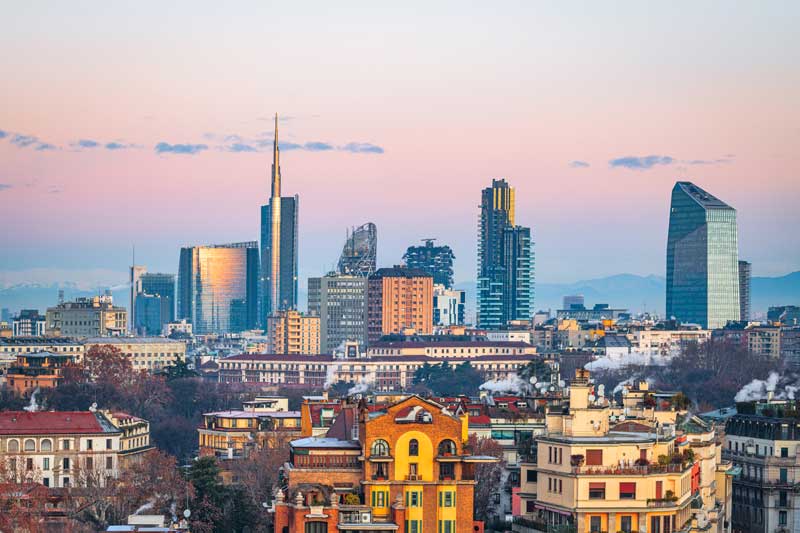Southeast Asia PE exits: Slow liquidity impairs fundraising
Southeast Asia is abuzz with expectations that an increase in strategic M&A will deepen a shallow PE exit market. In the meantime, many investors are at the end of their fund life rope. Something has to give
Global development finance institutions (DFIs) account for a meaningful portion of the money raised by mid-size private equity firms in emerging markets, and Southeast Asia is no exception. This is by nature patient capital and generally more lenient about lagging distributions. The patience has its limits, however. Usually, that’s around Fund III.
The International Finance Corporation (IFC), one of the most active LPs in Southeast Asia with more than 20 middle-market GP relationships across country-specific and pan-regional strategies, is a case in point. Much of its portfolio comprises managers in their 10th or 11th year of operation, yet some have only one or even no exits to their name.
IFC recognizes that the pandemic, although often evoked by GPs as an excuse, has been a legitimate impediment to PE game plans in the region, either slowing down exit timelines by two years or derailing them altogether. As a catalyst for market and ecosystem development, it has little appetite for fund-level secondary sales or nuclear options such as GP replacement.
Still, with many portfolio managers now treading water with two unrealised vintages, IFC, like many commercial LPs, is voting with its feet. The investor is tracking significant churn in terms of manager relationships, with prospects of any renewed stability clouded by anaemic IPO markets and a perceived decline in strategic M&A.
In this outlook, corporate Japan, a natural buyer in Southeast Asia, remains hesitant amidst a weak yen, while historical difficulties finding investor support for midcap businesses on regional capital markets is expected to improve only incrementally. The set-up is a near-term vacuum in exit activity, which will in turn pinch fundraising and deployment by GPs.
“Even from a DFI angle, we see exits in Southeast Asia as quite sluggish. The VC side is almost non-existent, and the mid-sized PE side is not much better,” said Huai Fong Chew, regional lead for private equity funds in East Asia and the Pacific at IFC.
“The funds in the most trouble are the 2012 vintages, which met with COVID in their 10th year. We have a lot of that because the Southeast Asia fund landscape blossomed at that time. I think exits will come, but unfortunately for funds at the tail end of fund life, you need to give it another 2-3 years.”
Searching for buyers
Wariness on this front is widespread in the wake of 2023. Private equity and venture capital exits in Southeast Asia reflected a global retraction last year, amounting to USD 2.8bn, the lowest total since 2005, according to AVCJ Research.
GPs are quick to point out that although headline numbers have always been relatively small, exits in the middle market – versus the VC sphere – have been consistent over the long term. This observation can be fleshed out to some extent in the paucity of activity in the prevailing venture exit channels. There have been no more than a handful of VC-backed IPOs in the region in any given year for the past 10 years.
PE and VC exits in Southeast Asia have generally tracked in a range of USD 5bn-USD 8bn a year over the same period, with the bulk of this coming from middle-market trade sales. An anomalous spike to USD 17.5bn in 2017 is attributable to a staged USD 10.4bn acquisition of Singapore logistics platform GLP, which saw a group including Hillhouse Capital and Hopu Investment take out positions held by GIC.
Optimism that more institutional capital will enter the region, deepening exit markets, is most often pinned on anecdotal traction, especially within the theme of investment resources being diverted away from China to more geopolitically neutral markets.
Some of the most convincing activity on this front came earlier this month, when The Blackstone Group, which secured USD 11bn for its latest Asia fund in 2022, announced it was expanding its already 100-strong Southeast Asia PE team and moving into a new Singapore office.
Sponsor-to-sponsor sales are generally seen as the most likely catalyst of increased exit activity in the medium term; “We can definitely sell to people like that [Blackstone],” said one Singapore-based investor. But there is more excitement in the notion of a strategic influx.
Northstar Group claims to have bucked the exit malaise of recent years, distributing some USD 1.2bn to LPs since 2019, largely thanks to the emergence of new strategic buyers.
While demand is said to be intact in the usual corridors with Japan, Korea, the US, and Europe, the firm has tracked a significant increase in interest from China, Taiwan, and India post-2020. Last November, Hong Kong-listed logistics group China Merchants Port agreed to acquire a 51% stake in Indonesia-listed container terminal business NPH Group, a Northstar investee.
Five years ago, auction processes for Northstar assets were typically dominated by financial sponsors. Today, the total number of counterparties in such processes remains unchanged, but the majority of participants are strategic – and they’re more aggressive.
This has also become apparent in auctions for other outside assets. In one instance, a Japanese strategic was said to have significantly outbid Northstar for a financial service company in Indonesia, paying 2x the private equity firm’s valuation.
“This positive momentum sets the stage for a compelling next five years, characterised by a surge in global interest for attractive assets in Southeast Asia,” said Chee-Yann Wong, Northstar’s CIO.
“As an illustration of the strong interest in Southeast Asian assets, we have regular meetings with people looking to either acquire one of our companies, invest new capital in them, or create joint ventures with them so they can build a Southeast Asian platform.”
Manufacturing, financial services, and healthcare are among the sectors expected to benefit most from the perceived momentum. Thailand is seen as a more viable supplier to the auto industry. Vietnam manufacturing is undergoing upgrades. Hospital groups in Malaysia and Indonesia have proven attractive to buyers outside the region.
Searching for quality
These developments have not necessarily made strategic aspirations to build pan-regional businesses more feasible, but in light of the geopolitical drivers behind much of the theme, Southeast Asia’s longstanding challenges around fragmentation could serve it well.
As a second investor puts it: “Maybe in 20 years, India will try to assert itself like China today. Investors are wary of putting too much industrial capacity in a country that can become too dominant. Southeast Asia is beautifully big and small that way.”
Southeast Asia-focused fund-of-funds Collyer Capital is to some extent betting on this psychology with its debut fund, which is seeking USD 100m for middle-market buyout and growth strategies. Traditional-economy, brick-and-mortar businesses are the priority due to their perceived attractiveness to trade buyers. Food and beverage and business services are areas of interest.
Collyer was co-founded in 2021 by Eric Marchand, formerly of Unigestion, Campbell Lutyens, and British International Investment, and has secured an anchor commitment from a European asset manager. The bulk of its capital is expected to come from family offices.
“[Southeast Asian] families and conglomerates are becoming more and more sophisticated,” Marchand said. “They understand that the international buyers are coming in. They’re seeing the interest and know they need to ready themselves for that by also being more active. It’s a virtuous cycle for M&A that should really boost the ASEAN economy for the next decade.”
The challenge for Collyer will be to identify quality in a still unproven market. This comes with an understanding that exits in Southeast Asia require significant portfolio handholding and the limited number to date is at least in part the fault of GPs themselves. Future entries must be more discerning, and operations must result in the creation of some kind of business that wasn’t there before.
“We are open for business in Southeast Asia, and I think that is true for most LPs in Asia, given everybody is looking to rebalance allocations. There is a higher level of receptivity globally for Southeast Asia now than any time in the recent past, but people want more proof,” said Suni Mishra, a partner at fund-of-funds Adams Street Partners.
“We expect a more stable exit environment in this region, but it will happen incrementally. For now, there are not enough high-quality GPs with deep track records or high-quality companies changing hands, but things are improving.”
Encouraging signs?
Tower Capital Asia, a firm set up by former 3i and Actis Capital executive Danny Koh, represents an emerging crop of regional managers beginning to flex credentials in this regard. Tower acquired Chinese traditional medicine (TCM) company Eu Yan Sang alongside Temasek Holdings in an approximately USD 150m deal in 2016; it is now negotiating a trade sale estimated to value the business at about USD 800m.
Koh declined to comment on the pending exit but described the value-add effort as the transformation of a retail chain into a product brand that could travel beyond its home market in Singapore. Costs were reduced by about 10% by streamlining various internal processes. A globally-minded CEO was installed. Despite being a TCM asset, the buyer universe was never limited by geography.
“We define quality as having a storied brand that is entrenched in the marketplace and the ability to attract global talent so you can plug-and-play, transferring models and methods regionally,” Koh said. “If you can put all that together, that’s the recipe for an asset that will attract global interest.”
Standout evidence that this approach can result in sizeable exits came in November, when TPG agreed to acquire Ramsay Sime Darby, a Southeast Asian hospital joint venture between Australia’s Ramsay and Malaysia’s Sime Darby, for about USD 1.5bn.
Nicholas Bloy, a managing partner at Navis Capital Partners, sees the deal as confirmation that consolidation and buy-and-build strategies can deliver regional businesses with the scope to attract global buyers. Indeed, if large groups are not created from smaller groups in this way, the touted influx of strategic capital will have few viable targets.
“People focus on investment, and they rarely give the whole exit scenario enough scrutiny. That’s changing because GPs are becoming more realistic,” Bloy said. “It may look like a great deal at entry, but how are you getting out? Who’s buying it? Why are they buying it? There’s a lot more realism coming into the industry, as there needs to be.”
Since 1998, Navis has completed about 100 platform buyouts and 150 follow-on acquisitions, and it has realised some 65 exits, overwhelmingly via trade sales. There were five exits in 2022, generating USD 1.8bn in proceeds. The firm expects 3-4 exits this year.
Last year was slow, with Bloy citing the increased cost of capital in a high interest rate environment pushing M&A down the corporate agenda globally. Navis and three other investors contacted by AVCJ observed that 2023 was overshadowed by a widening gap in buyer-seller valuation expectations. Many sales had to be put on hold, and in the interim, alternate means of liquidity had to be pursued.
To this end, Navis took the step of forming a liquidity committee earlier this month. Rather than focus on traditional exits, the committee looks at every other source of cash to distribute to LPs, including dividend recaps.
It builds on significant activity in this vein, including the raising of a USD 450m continuation fund in 2021 comprising six companies from the firm’s 2010 vintage, one of the first of its kind in the region.
“If you think the valuation is not quite right, you have to have this idea of a liquidity committee to find other ways to get cash back to investors short of a full sale. That’s an imperative,” Bloy said. “I think it’s best practice right now to do that. If other firms don’t have such committees, they really should have them.”
Mind the gap
The valuation gap necessitating such moves is arguably the key obstacle for PE firms in Southeast Asia under pressure to return funds before the presumed swell of M&A activity in the second half of the decade.
The logic for delaying an exit is that as interest rates ease and the global cost of capital goes down, corporates will resume their M&A agendas, approaching Southeast Asia with at least somewhat less disciplined budgets. The logic for expediting an exit is the distinct possibility that post-pandemic deflation will lead to a permanently lower valuation world in some categories.
LPs and GPs will not always agree on which logic fits a particular asset, but ultimately, it will be the fund managers that make the call. LPs will therefore be more circumspect of GP idealism in the near term, as well as cautious about the idea that exits are being pursued just to show some distributions and raise the next fund rather than maximising the value of the asset.
“The valuation gap is closing quite rapidly, and it’s probably mostly a seller correction. From the sponsor’s perspective, they need to be more realistic about fundraising and delivering distributions to LPs,” said Janice Leow, EQT’s head of Southeast Asia.
“Last year, everyone was in shock and not sure if the public markets would just have a quick rebound. That hasn’t happened. So, I expect this year will be a year of reflection and realism – and much more about getting these deals done.”
The ASEAN-specific aspects of this tension also suggest that trade sale exits at subdued valuations could be set to proliferate. Collyer’s Marchand posits that expectations around PE returns in developing markets are inappropriately focused on maximising multiple of money.
“In emerging markets, if you get an offer that still gets you a 20%-plus IRR, take it, even at a multiple lower than 2x. Sometimes, if you wait longer, the outcome can be impacted,” he said.
“You have to have a more liquidity-focused, take-your-money-off-the-table perspective in Southeast Asia rather than risking a longer holding period because you believe there’s potential for extra value in doing so. It’s about recognising that emerging markets are volatile.”













